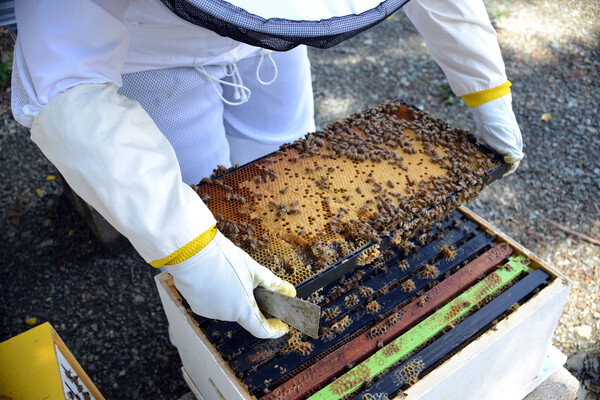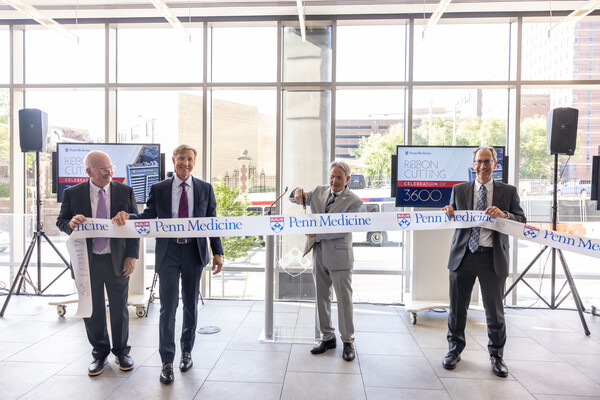
Image: Kindamorphic via Getty Images
At Penn, crossing disciplines is a celebrated endeavor. Indeed, President Amy Gutmann’s Penn Compact 2020 underscores the importance of integrating knowledge as a means toward achieving innovation and discovery.
Yet no one said bridging academic fields is easy. A group of Penn professors and students faced challenges in doing so in a unique pair of courses that ran concurrently this spring, one situated in the School of Design and the other in the School of Arts & Sciences’ Department of Biology. These challenges, however, have begun to pave the way for not-before-seen applications of natural systems to achieve beautiful—and practical—results.
“When you’re teaching design students about how to manipulate the DNA of bacteria, for example, it’s very hard,” says Orkan Telhan, an assistant professor of fine arts and emerging design practices at PennDesign, who co-taught one of the courses. “But it’s foundationally very important. We want to make sure they’re not just learning for the sake of learning, but are learning in order to engage with scientific methods as artists and designers. We would like them to contribute to the sciences not only with new applications but also with new research questions.”
The course offerings, “BIOL 376: Microbial Diversity and Pathogenesis Lab,” taught by biology professor Mecky Pohlschröder and Karen Hogan, the department’s instructional lab coordinator, and “FNAR 268/568: Integrative Design Studio—Cultures of Making,” taught by Telhan and the Graduate School of Education’s Yasmin Kafai, were held concurrently through the spring 2014 semester. Then, over the last month of the semester, the students came together to explore how design and biology could complement one another to create products, such as designing microbial fuel cells that use energy produced by bacteria to produce electricity.
For the biology students, participating in the course helps them understand different ways of generating renewable power from microbes and different uses for that power. And for the design students, the course integration helps them ask new kinds of questions about crafting green technologies that scientists themselves might not generate.
“It’s not enough for the scientists to put an idea together and then bring designers in to get involved at the last stage,” Telhan says. “They have to be part of the whole process.”
The courses were part of the Integrating Sustainability Across the Curriculum Program, an initiative begun at Penn in 2012 to introduce sustainability concepts into new and existing courses. Because microbial fuel cells, a renewable energy source, were at the center of some of the courses’ hands-on experimentation, it was a natural fit.
Microbial fuel cells are themselves quite sustainable, at least in theory. They rely on bacteria, found in sustainability substrates such as soil or water, to break down organic material in order to produce an electric current.
In these courses, students used commercially available microbial fuel cell kits to perform experiments. Students may vary the device’s substrate, testing the performance of a soil sample from one site against another. In other experiments, they might use the electricity produced to power a light, and in another use it to run a motor. The experiments, by their nature, explains Hogan, rely on replication. Therein lies the not-so-sustainable aspect of the course.
“One of the problems we have with these experiments in a classroom setting is the amount of replication that needs to occur,” Hogan explains. “With the kits costing $45 a piece, it was cost-prohibitive for us to do a sufficient amount of replication using a commercially manufactured kit.”
To address this concern, Katie Dalton, a student in the Master of Applied Geosciences program, and Tiffany Lu, an undergraduate biology major, spent this past summer tinkering with a variety of materials to build cheaper, more sustainable microbial fuel cell kits.
“Cheap cost was the goal, but we were also seeking materials that were as sustainable as possible,” says Dalton.
Dalton and Lu crafted fuel cells using everything from Chinese take-out boxes, to steel wool sponges, to ziplock deli meat containers.
“It was a progression of baby steps leading up to bigger discoveries about how to build the best product,” Dalton says.
By summer’s end, they hit upon a design that cost only about $5.
“For the next iteration of the course, we’ll be able to do more sophisticated experiments because we won’t be bound by cost,” Hogan says. “It’s directly impacted our curriculum.”
The new fuel cells will also enable the professors and their students to take the fruits of their course beyond Penn, into the community. They’ve partnered with Philly Earth, an after-school enrichment program, to use microbial fuel cells in lessons with middle school students from North Philadelphia.
“Microbial fuel cells help make a bridge between the undergraduates and the middle schoolers,” Hogan says. “It’s such an exciting tool to use because it brings together design, microbiology, chemistry, and engineering. And because they’re affordable, at the end of the program, the middle school students will be able to bring their creations home.”
Katherine Unger Baillie

Image: Kindamorphic via Getty Images

nocred

nocred

(From left) Kevin B. Mahoney, chief executive officer of the University of Pennsylvania Health System; Penn President J. Larry Jameson; Jonathan A. Epstein, dean of the Perelman School of Medicine (PSOM); and E. Michael Ostap, senior vice dean and chief scientific officer at PSOM, at the ribbon cutting at 3600 Civic Center Boulevard.
nocred